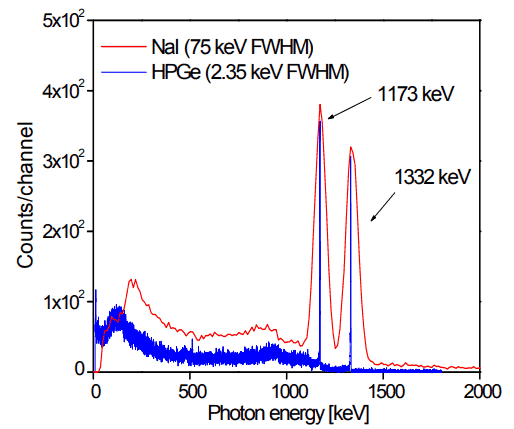Analysis of gamma spectra is very interesting since it has a structure, and workers must distinguish between true pulses to be analyzed and accompanying pulses from different radiation sources. We will show the structure of the gamma spectrum in the example of cobalt-60 measured by the NaI(Tl) scintillation detector and the HPGe detector. The HPGe detector separates many closely spaced gamma lines, which is very beneficial for measuring multi-gamma emitting radioactive sources.

Cobalt-60 is an artificial radioactive isotope of cobalt with a half-life of 5.2747 years. It is synthetically produced by neutron activation of cobalt-59 in nuclear reactors. Cobalt-60 is a common calibration source found in many laboratories. The gamma spectrum has two significant peaks, one at 1173.2 keV and another at 1332.5 keV. Good scintillation detectors should have adequate resolution to separate the two peaks. For HPGe detectors, these peaks are perfectly separated.
As can be seen from the figure, there are two gamma-ray photopeaks. Both detectors also show response at the lower energies, caused by Compton scattering, two smaller escape peaks at energies 0.511 and 1.022 MeV below the photopeak to create electron-positron pairs when one or both annihilation photons escape, and a backscatter peak. Higher energies can be measured when two or more photons strike the detector almost simultaneously, appearing as sum peaks with energies up to the value of two or more photopeaks added.
